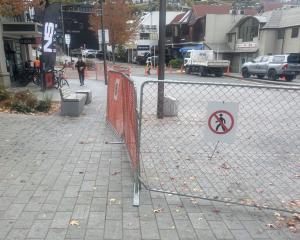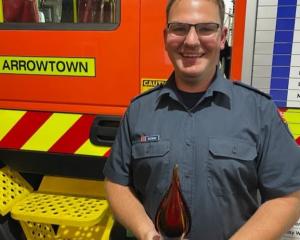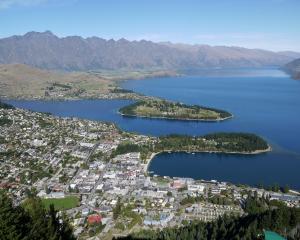Two Queenstown Lakes District Council managers have recommended Ladies Mile be included in the district's Special Housing Area lead policy.
If agreed by the council at its full meeting in Queenstown on Thursday, the decision would open the door to potential development of 136ha along the section of State Highway 6.
The report, prepared by planning practice manager Blair Devlin and reviewed by planning and development general manager Tony Avery, said there were 310 responses to the proposal, with a range of views, for and against.
Council officers believed the Queenstown Country Club, under construction, set a precedent because it was the first major development on the upper, more visible part of Ladies Mile.
In their feedback, some people questioned whether development of Ladies Mile would result in ``affordable housing''.
The report said Queenstown had a ``severe'' housing problem and the purpose of the Housing Accord and Special Housing Areas Act (Hashaa) was not to provide affordable housing, but enhance affordability by helping increase land and housing supply.
The council's approach had been to specify a certain percentage of developments be one- or two-bedroom units, which related to affordability ``as they are smaller and more affordable''.
Regarding traffic and transport implications, the council noted at its June meeting the Shotover Bridge had been identified as a key ``capacity restraint''. While roads either side of it could be two-laned, the bridge could not.
If 1000 medium-density dwellings were developed along Ladies Mile by 2025, the bridge would reach capacity that year, or in 2032 if a 10% shift to alternative modes of transport was achieved.
The NZ Transport Agency was ``comfortable'' with 1025 houses on Ladies Mile, but it was opposed to the full extent of development enabled under the indicative master plan.
The report said to address NZTA's concerns, a ``pause'' button was proposed in the lead policy. That meant no new expressions of interest would be considered for SHAs once applications for qualifying developments had been lodged which exceeded 1100 units.
``This will allow time for further assessment to be undertaken of the impact of additional housing on the Ladies Mile beyond the 1100 residential units that the NZTA were able to support through the [Housing Infrastructure Fund] application.''
The council also proposed to reduce the potential yield to 2185 - down from a maximum of 2874 units - by removing the potential for a small, second residential unit above the garage on areas identified for medium density.
The report's recommendations also included the reinstatement of the public feedback stage for each expression of interest lodged for an SHA on Ladies Mile and for an additional area of ``mixed use'' near the Ladies Mile Pet Lodge.
``Council is faced with a series of decisions which involve balancing a series of competing elements. It needs to decide whether it does see the need to enable further greenfields sites to be developed, or to continue encouraging land that is currently zoned to be developed and come to market.
``Council can either enable development that (like all SHAs) is not consistent with its operative and proposed district plans, and do so relatively quickly using the SHA mechanism.
``Alternatively, it can look to address the Ladies Mile area through the proposed district plan as part of the response to the Wakatipu Basin Land Use Study, over a longer time horizon.''
Its preferred option was to include the area in the lead policy.












